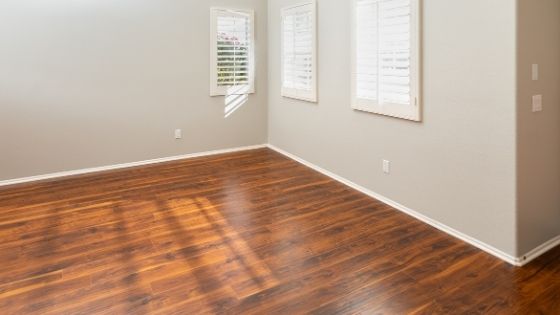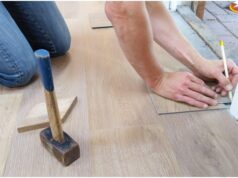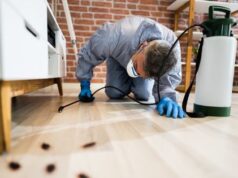Hardwood is considered to be one of the best flooring options. It is incredibly tough since it is made of solid lumber boards that are almost an inch thick. Many people find it attractive, too, because of the unique grains and patterns present on its surface. The primary problem with hardwood, however, is its price. So, many homeowners choose a less expensive alternative by requesting a laminate flooring installation in Timberville, VA.


Although it is much more affordable, laminate flooring should not be underestimated. It offers plenty of benefits that always delight homeowners. Read through the rest of this article to learn everything about laminate floors.
What Is Laminate Flooring?
Laminate flooring is a synthetic material specifically engineered to mimic the appearance of natural wood. Because of this characteristic, it is also sometimes called an artificial wooden floor or floating wood tile. But unlike real hardwood flooring, laminate is much lighter because a single plank is only about a quarter to a half-inch thick.
Composition
This flooring option is composed of four separate layers, and each of them serves a specific purpose:
Wear Layer
The wear layer, which is also called the overlay, is the topmost part of the plank that comes in a matte and glossy finish. It is a thin and transparent sheet that has two main purposes. The first one is to prevent the laminate flooring from sustaining any minor damage, such as scrapes from shoes and pet claws or dents from heavy furniture. Aside from that, it protects the second layer from fading or discoloration due to exposure to moisture and ultraviolet rays.
Decorative Paper
The second layer is a decorative paper, which is responsible for giving the plank its “realistic” appearance. It is made of high-quality paper printed with various motifs. Although it is famous for its wood-looking surface, it also comes in other designs and patterns. Some manufacturers produce planks that look like stones or turf.
Core Board
The thickest and hardest layer is called the core board. It is made of either medium- or high-density (MDF or HDF) fiberboard composed of softwood fibers that are heated, waxed, and bound with resin. Laminate floorings that have an HDF core board cost slightly higher and are undoubtedly more durable compared to their MDF counterpart. Although it is incredibly tough, this layer is quite fragile. It quickly rots when exposed to moisture.
Back Layer
The back layer is the bottommost part of the laminate flooring. Sometimes padded with foam, this layer is responsible for keeping the plank even and in place. It is also slightly water-resistant because it needs to prevent moisture from the ground from reaching and damaging the core board.
These layers are fused using the direct-pressure laminate construction process. The method uses about 300 degrees F of heat to bind the four layers and prevent them from coming apart.
Installation and Maintenance
The edges of laminate floorings are specifically designed for fast and easy installation. Two planks can be quickly interlocked by sliding one of them beside the other. Although it is easy to set up at home, it is still a great idea to ask for professional assistance. An expert in Laminate flooring installation Timberville VA, can help to ensure that the planks are seamlessly fastened to each other and properly attached to the ground.
Laminate flooring is also relatively easy to maintain. Just follow these tips:
- Vacuum the floor at least once a week to prevent dust, dirt, and grime from accumulating on its surface.
- Regularly wipe the planks with a soft and dry piece of cloth to keep its shiny appearance.
- Get rid of wet spills quickly because exposure to moisture will damage the planks.
- Consider placing furniture pads to prevent the surface from getting dented or scraped.
- Mop the floor once in a while. Do not do this often because excessive moisture might cause the upper layer to peel off.
- If a plank gets damaged, contact an expert immediately to have it replaced.
These are basically all the things you need to know about laminate flooring. If you choose to use this material for your home, do not hesitate to call a local flooring contractor to estimate how many planks you will need.









